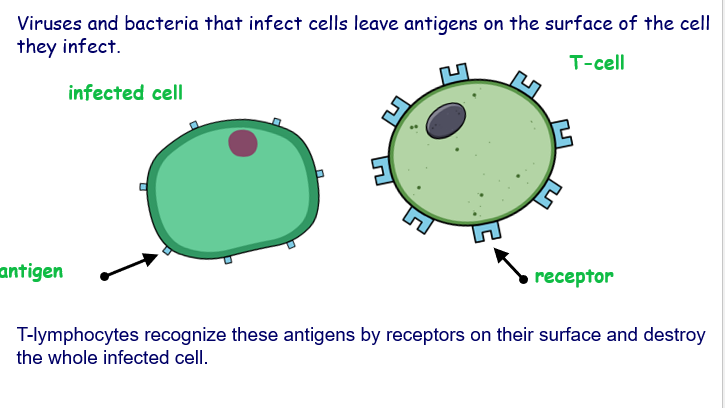Immunity thrid line of defence
1/12
There's no tags or description
Looks like no tags are added yet.
Name | Mastery | Learn | Test | Matching | Spaced |
|---|
No study sessions yet.
13 Terms
Any pathogens that are able to survive after the non-specific immune response are targeted according to their type

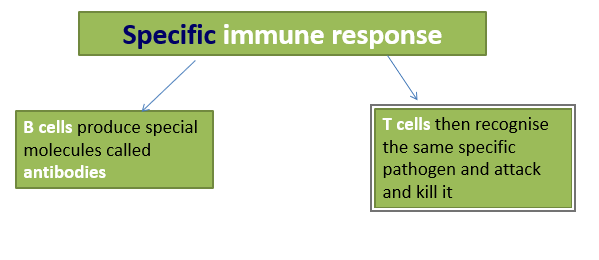
Specific immunity response
Lymphocytes are a type of white blood cell found in the blood or lymph nodes and made by bone marrow. There are several types of lymphocyte, including:

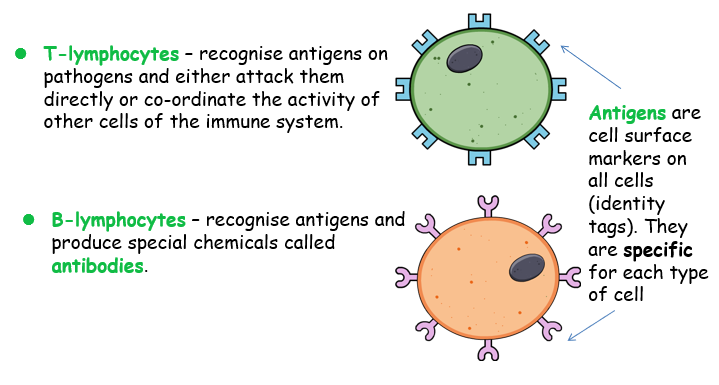
T lymphocyte - Type 1 lympo
lT-lymphocytes – recognise antigens on pathogens and either attack them directly or co-ordinate the activity of other cells of the immune system.

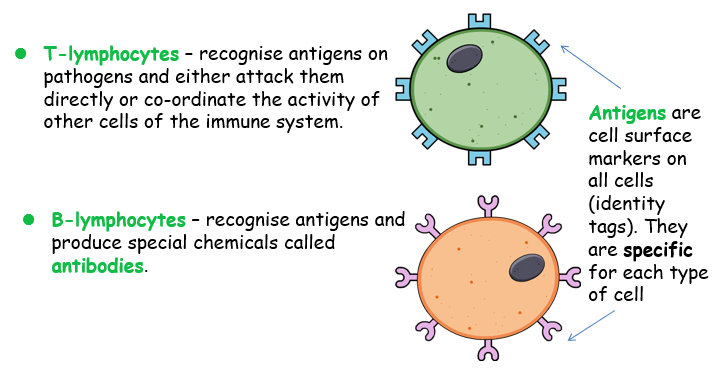
Antigens - type 2
Antigens are cell surface markers on all cells (identity tags). They are specific for each type of cell

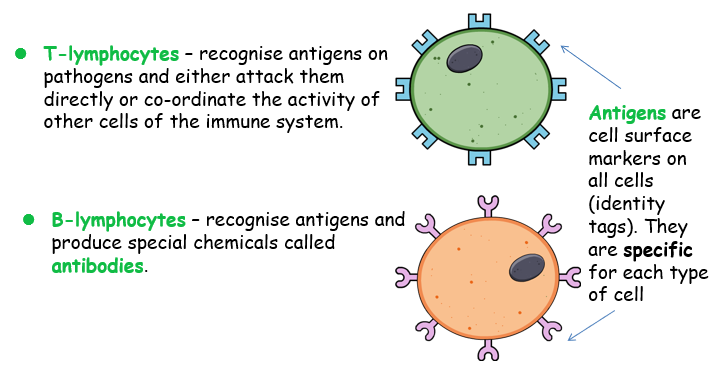
B lymphocytes
lB-lymphocytes – recognise antigens and produce special chemicals called antibodies.

ANtibodies
Antibodies are special
Y-shaped proteins produced by B-lymphocytes in response to antigens.

how they work
Antibodies work by binding to antigens on pathogens, ‘labelling’ them and causing them to clump together. The pathogen can then be destroyed by:

Phogocts by macrophages , T lymphocytes , the antibodies
antibodies
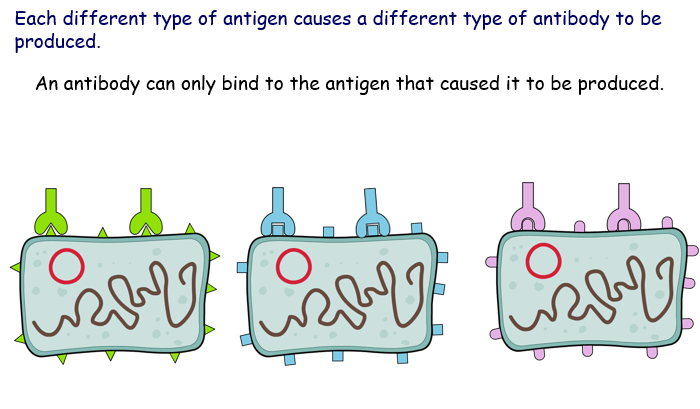
Producing antibodies
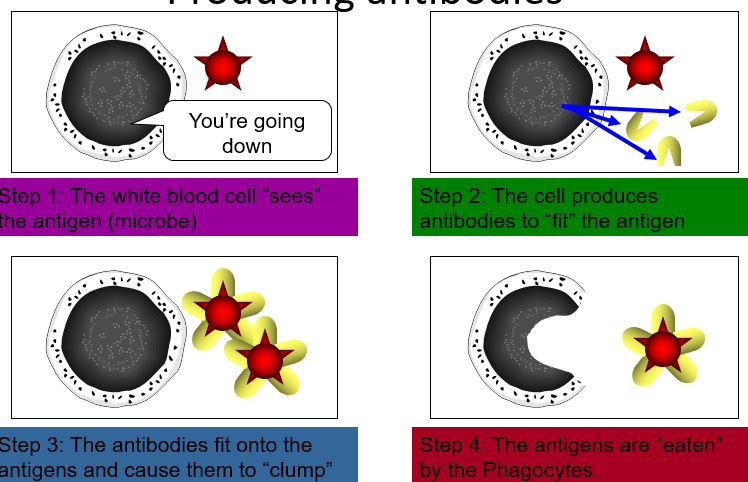
Delayed response
The B-lymphocyte that produces the correct antibody for the antigen begins dividing to produce many more antibody-producing cells.

Delayed response
It takes a few days to produce enough antibodies to destroy the pathogen. This means there is delay between infection and the person beginning to feel better.

Delayed response
Once a pathogen has been destroyed, a few memory cells remain. These recognize the pathogen if it re-infects, and make the immune response much quicker and more effective. This is called active immunity.
Unborn babies obtain some natural immunity by receiving antibodies across the placenta from the mother. Antibodies are also passed to babies through breast milk.

Hidden pathogens - how does the body eal with pathogens
